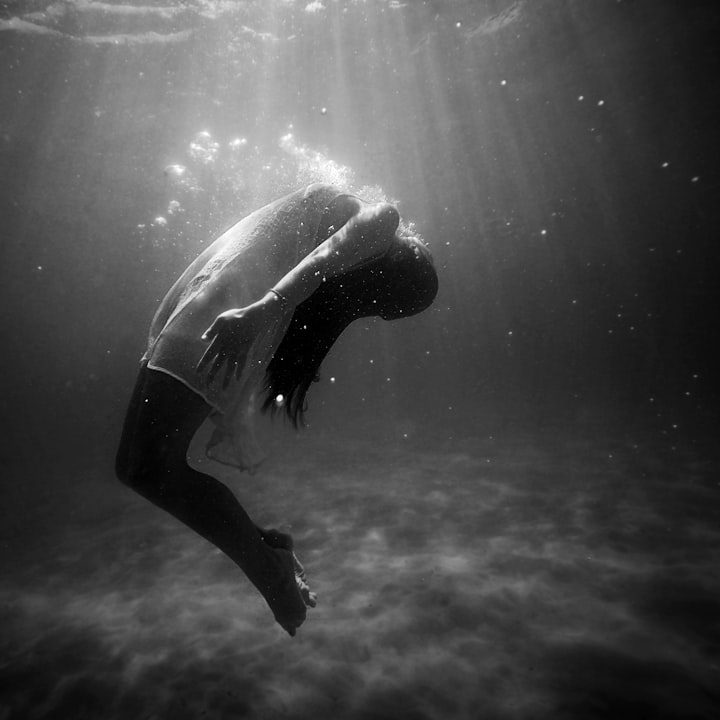
Have you heard about La Llorona? The legend of La Llorona, or The Weeping Woman?
She's a famous ghost woman from Mexican folklore, but her story has also spread across Latin America. It's a chilling story that's been passed down for generations. The story typically revolves around a woman named Maria, who is often portrayed as a beautiful but vain and jealous woman. The specifics of the story can vary, but the core elements remain consistent in many retellings:
According to the legend, Maria was a young woman who lived in a rural village or town, often during the time of Spanish colonial rule in Mexico. She was known for her beauty and charm, but her vanity and jealousy consumed her. Maria fell in love with a handsome man, often portrayed as a nobleman or wealthy rancher, and they had children together. However, as time passed, Maria's husband began to lose interest in her, focusing instead on his work or becoming involved with other women. Consumed by jealousy and rage, Maria's sanity slipped away, and in a fit of madness, she drowned her children in a river or lake.
Realizing the magnitude of her actions and overcome with grief and remorse, Maria is said to have wandered the banks of the waterway, crying out in anguish for her lost children. Some versions of the story suggest that Maria took her own life shortly afterward, while others depict her as doomed to wander the earth as a tormented spirit, forever searching for her lost children.
La Llorona is often described as a ghostly figure dressed in white, with long dark hair and a mournful expression. She is said to appear near bodies of water, particularly rivers and lakes, where her cries can be heard echoing through the night. Some versions of the legend warn that encountering La Llorona can bring misfortune or death, particularly to children who are out late at night or near bodies of water.
The legend of La Llorona serves as a cautionary tale, warning of the dangers of jealousy, vanity, and the consequences of one's actions. It has been passed down through generations in Latin American culture, with variations in different regions but maintaining its core themes of love, betrayal, and tragedy.
La Llorona is primarily a folk tale and does not have concrete historical evidence to support its existence as a factual event. Instead, it is deeply ingrained in the cultural fabric of Latin America and has been passed down through generations via oral tradition, literature, and various forms of media.
While there may not be direct evidence of a specific woman named Maria who drowned her children and became a ghost, the story of La Llorona serves as a cultural symbol with deep-rooted meaning. It explores themes of love, betrayal, guilt, and the consequences of one's actions. The legend continues to resonate with people across Latin America and beyond, serving as a cautionary tale and a source of fascination for many.
Over time, there have been reported sightings or encounters with figures resembling La Llorona, particularly in areas where the legend is prevalent. However, these accounts are typically anecdotal and lack verifiable evidence. They often arise from folklore, superstition, or the imagination, rather than from documented historical events. Ultimately, the legend of La Llorona persists as a cultural phenomenon and a potent narrative within Latin American folklore, despite the absence of empirical evidence to substantiate its claims.
And, there have been several movies based on the legend of La Llorona. One of the most recent and notable films is "The Curse of La Llorona," which was released in 2019. Directed by Michael Chaves and produced by James Wan, the film is part of "The Conjuring Universe" and follows the story of a social worker and her children who become entangled with the vengeful spirit of La Llorona. In addition to "The Curse of La Llorona," there have been various other adaptations of the legend in film and television, both in Mexico and internationally. These adaptations often reinterpret the story to fit different genres and cultural contexts, but they all draw inspiration from the haunting tale of the weeping woman.
As the legend of La Llorona continues to captivate audiences around the world, it serves as a reminder of the enduring power of folklore and the human fascination with the supernatural. Whether viewed as a cautionary tale, a cultural touchstone, or simply a spine-tingling ghost story, La Llorona's legacy lives on, her mournful cries echoing through the annals of time. Though the truth behind the legend may remain elusive, its impact on popular culture is undeniable. From movies and television shows to books and music, La Llorona's haunting presence continues to inspire artists and storytellers to explore themes of love, loss, and the darkness that dwells within the human heart.
So the next time you find yourself near a lonely riverbank on a moonlit night, listen closely. You just might hear the faint echo of a woman's weeping, carried on the breeze—a reminder of the timeless tale of La Llorona, and the power of a ghost story to endure through the ages.
About the Creator
Innarina
Since childhood, I've been captivated by the unknown. Imagine I explore ancient myths, spooky tales, and unsolved puzzles. Let's uncover secrets together through curiosity.






Comments
There are no comments for this story
Be the first to respond and start the conversation.